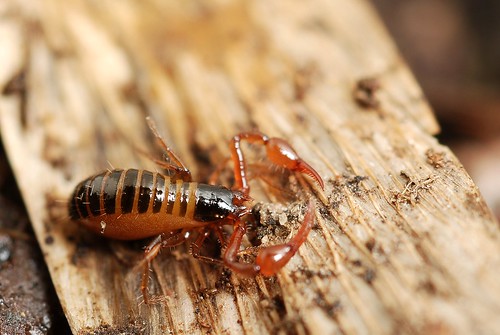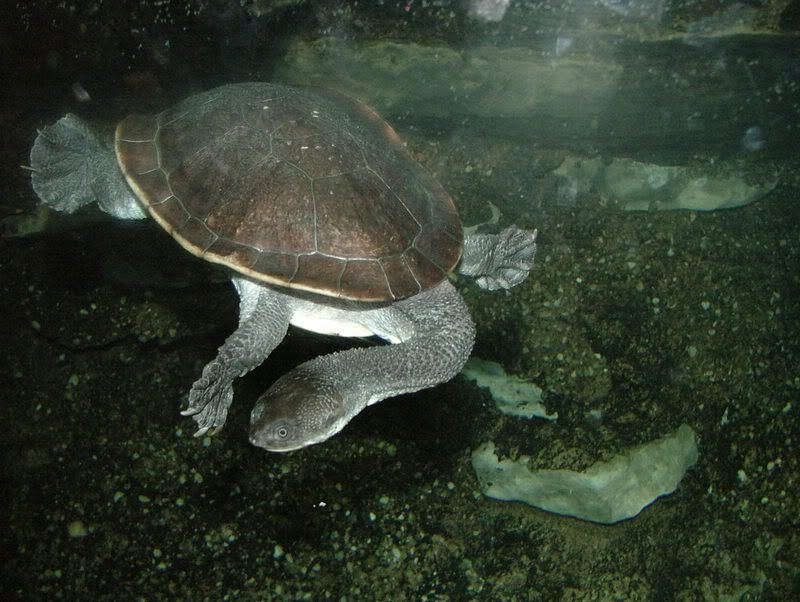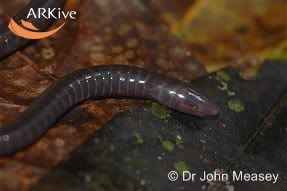(Alternate title: Plays by Sense of Smell)
I got an urge this month to write about a blind cave animal, knowing that there are some exciting organisms that I've missed so far. I even went so far as to search "
endangered blind cave," knowing that something interesting could fit after that description. Well, a number of animals can, such as the endangered Texas Blind Salamander, which lives within the same cave system as the
Arachnids I've written about previously. However, on the second page, I saw a mention of the
Alabama Cavefish (
Speoplatyrhinus poulsoni) and decided to
see find what I could find.
 |
| Image from Aldemaro Romero |
The "proper" term for a completely cave-dwelling animal is "troglobite," and this term comes with a set of characteristics that the
Alabama Cavefish does a wonderful job of illustrating. Troglobites
1 are small (not a lot of nutrients make their way into the caves), eyeless (when it's this dark, eyes aren't sensory organs, they're disease ports), and a range of colors from white to transparent (color just wastes precious nutrients when a] it's pitch black and b] no one around has eyes anyway). Other sensory organs go into overdrive to make up for the lack of eyes. Take, for example, the lateral line. In most fish, it is a row of cells that allow fish to sense vibrations in the water--effectively acting as fish ears. Well, in the Alabama Cavefish, that line becomes a network covering the entirety of the fish, shown beautifully in
these pictures. If we stick with the "fish ear" analogy, I suppose it's not that different than most bats developing
big honkin' ears. They also have large sensory papillae (read: fish noses) that help them sniff out prey in the dark.
The discovery of the Alabama Cavefish sounds like quite an
interesting story. In 1966,
John Cooper was a Ph.D. student studying the ecology and taxonomy of cave crayfish, and was thus well versed in the common troglobitic fish found in the area. Seeing what he thought was a Southern Cavefish, he caught it, looked at it, and yelled to his wife (who was apparently fine with following her husband down dark, cold, wet cracks in the earth), "This ain't
Typhlichthys, it's something nobody ever seen before."
2 After a few more sampling trips to Key Cave, and years in front of a dissecting scope, the species was officially named.
Three years later, it was listed as threatened. Despite frequent (and
difficult) excursions into Key Cave, no more than
ten Alabama Cavefish have been seen at the same time, causing guesses about the population size to be nothing more than guesses. One of the biggest worries that researchers have is that something will happen to the
Gray Bats (also endangered) that roost in the cave and bring nutrients into the cave in the form of poop. The bats eat outside insects (mosquitoes and the like), poop in the cave, which is eaten by bacteria, which is eaten by amphipods and isopods, which are eaten by the Cavefish. If the bats get messed with, then the whole system falls apart.
To protect these now critically endangered fish and their habitat, the entire site is now a
National Wildlife Refuge. The cave is not open to the public, which protects the bats and fish, and the refuge itself provides a buffer between the caves and nearby development, which would mess with the groundwater flowing into these isolated sanctuaries.
1 Alabama Cavefish are more properly called "stygiobites," which are aquatic cave-dwellers. While "troglo-" refers to caves, "stygio-" refers to the River Styx. If you're wondering, the "-bite" is just "bio-" as a suffix.
2Don't even bother trying that five times fast. Try saying it twice, at any speed.














